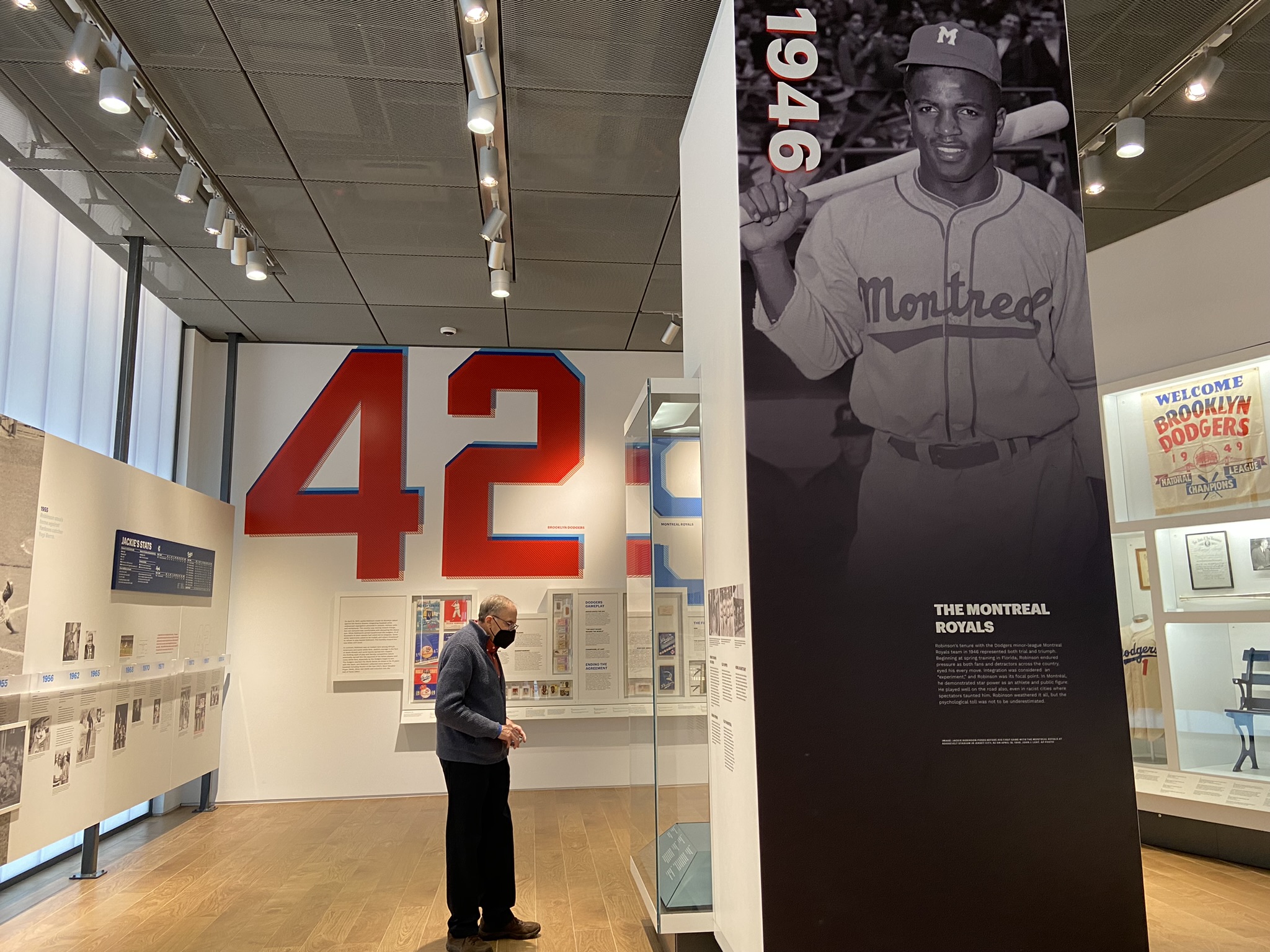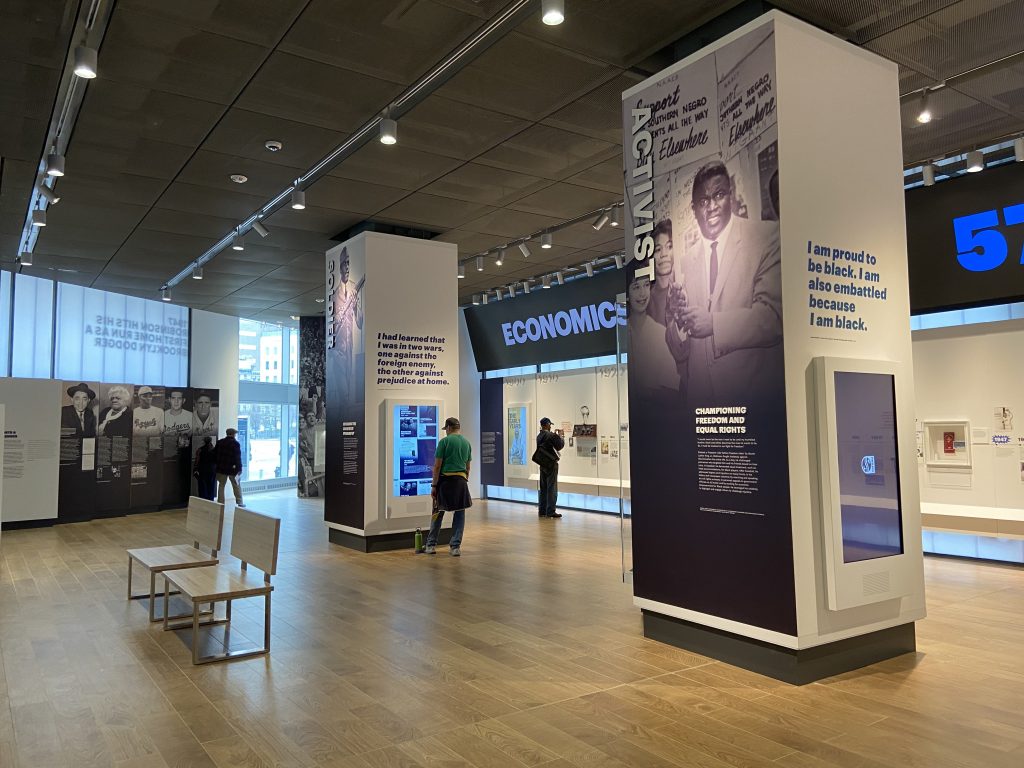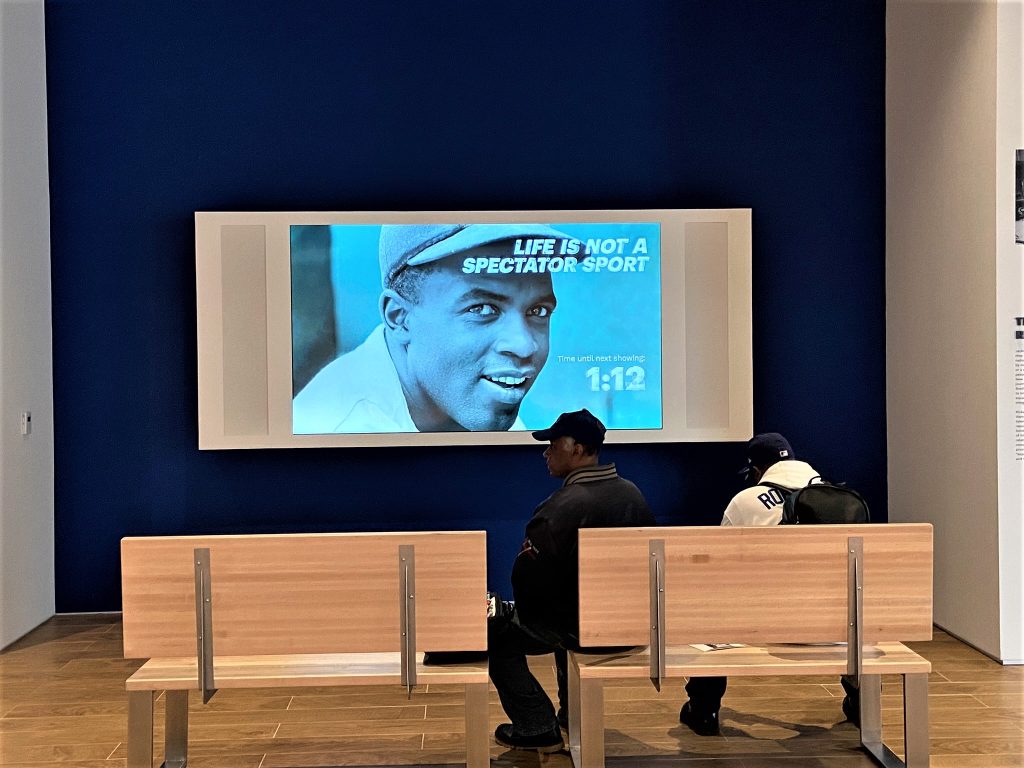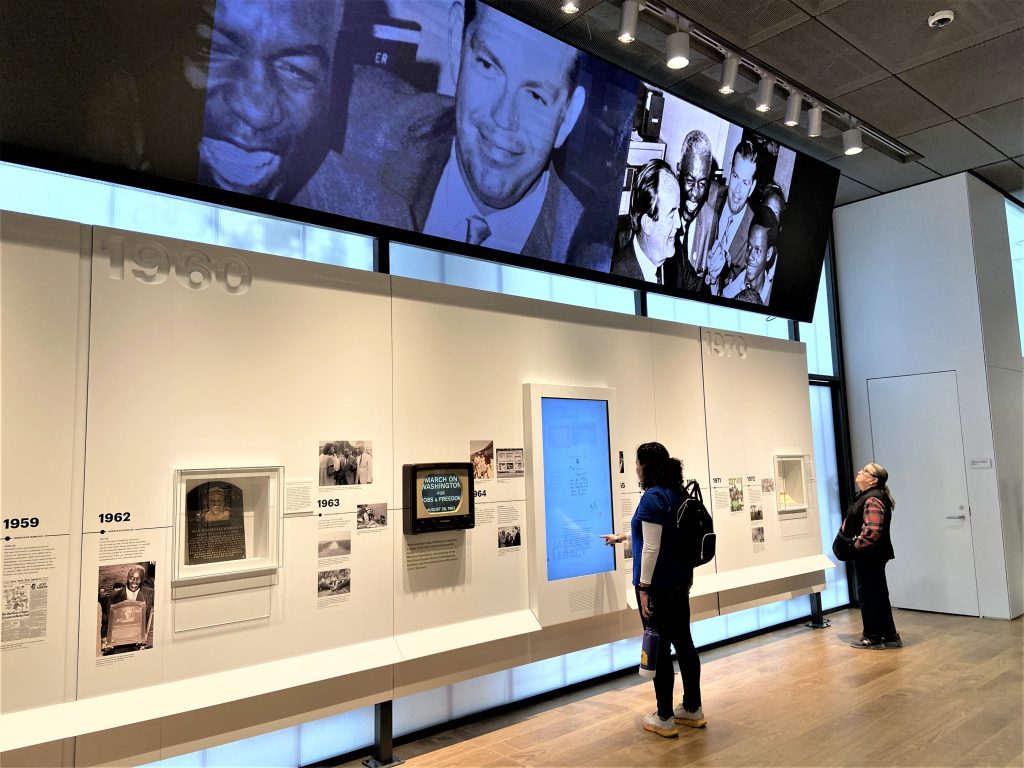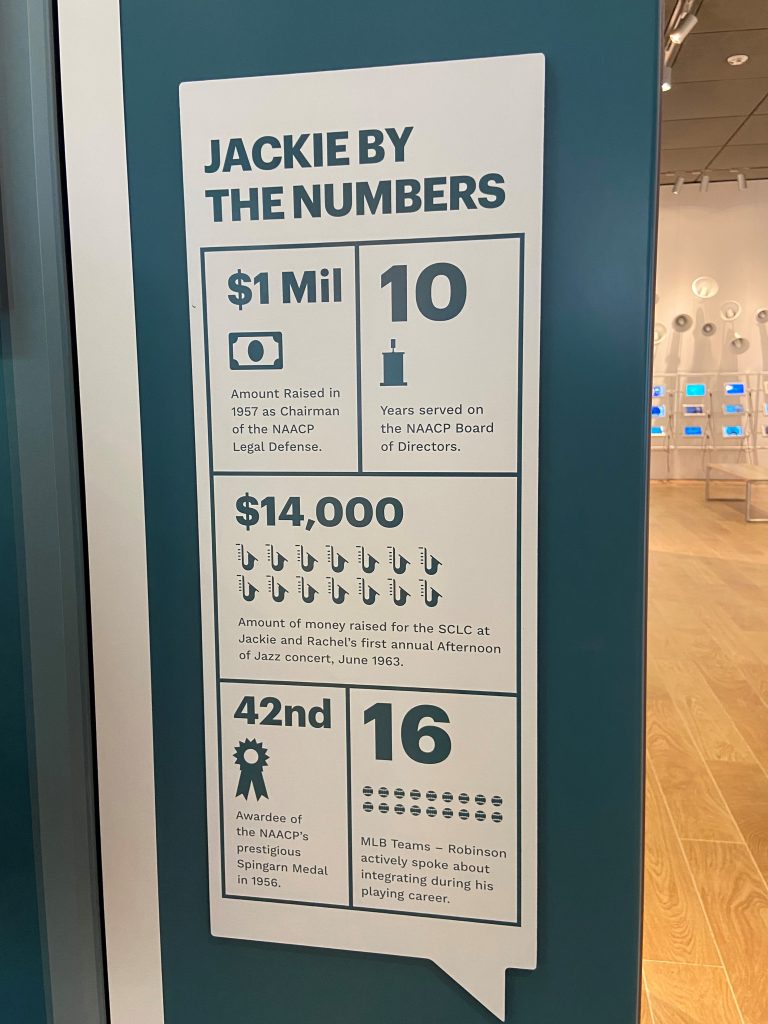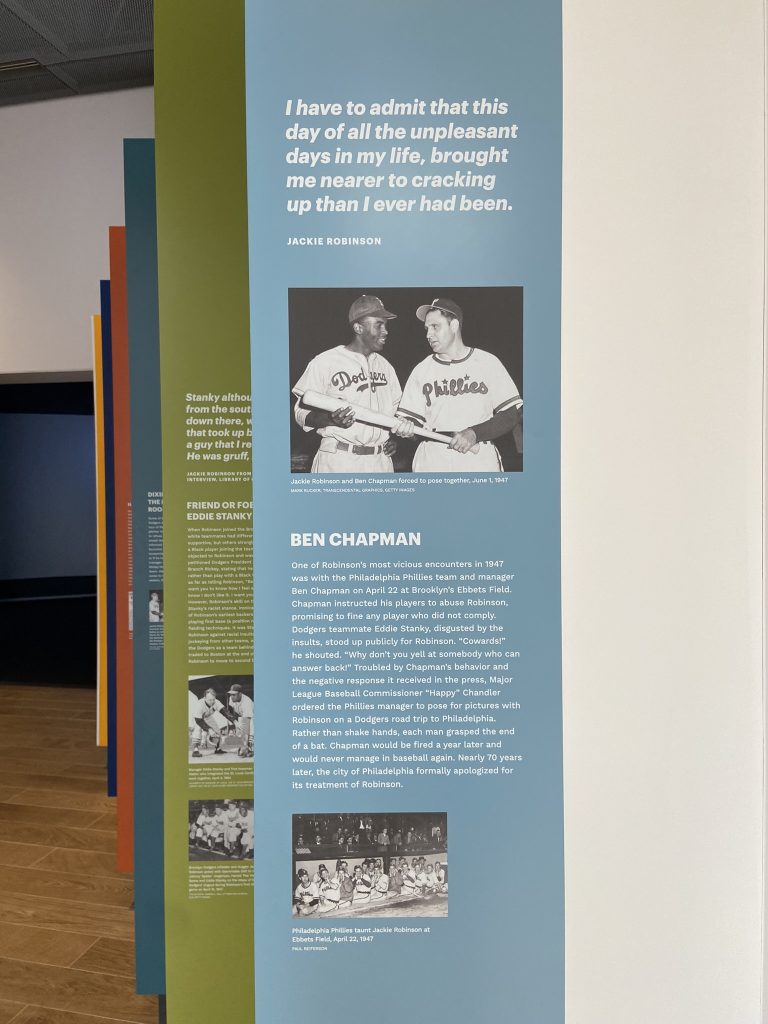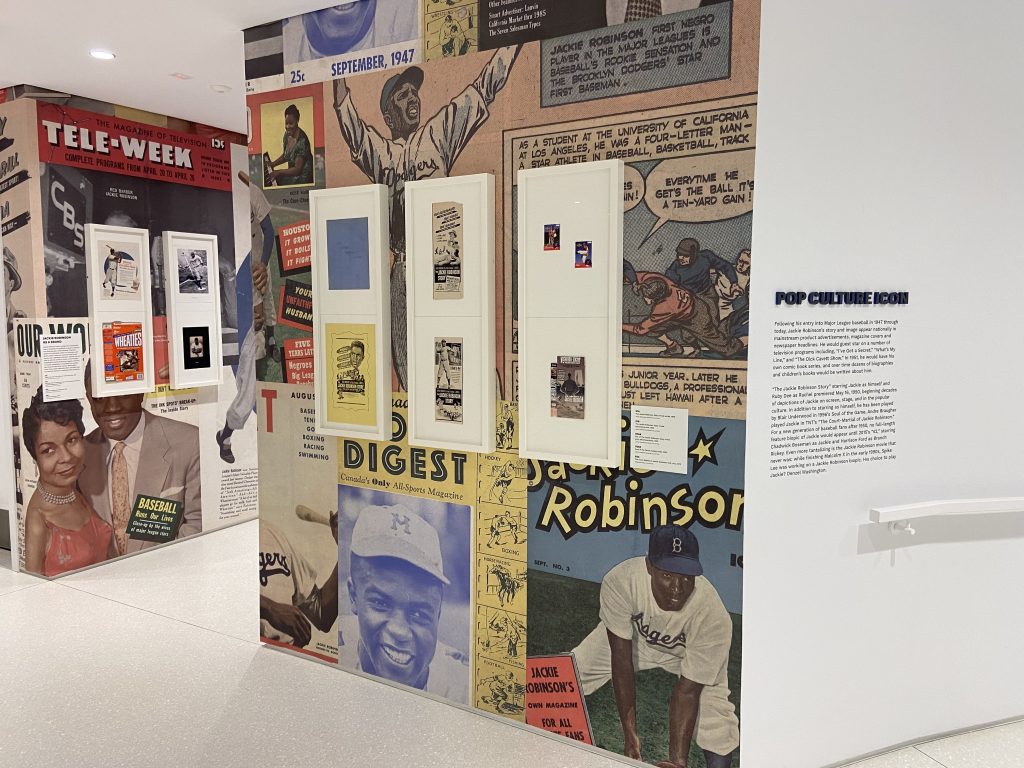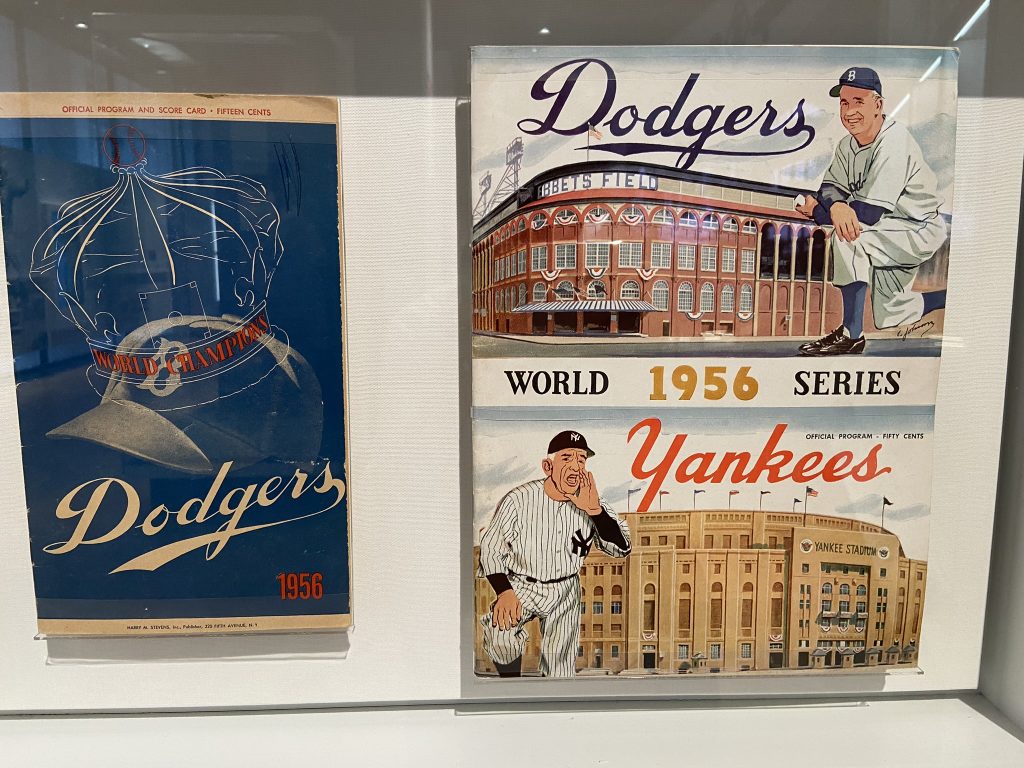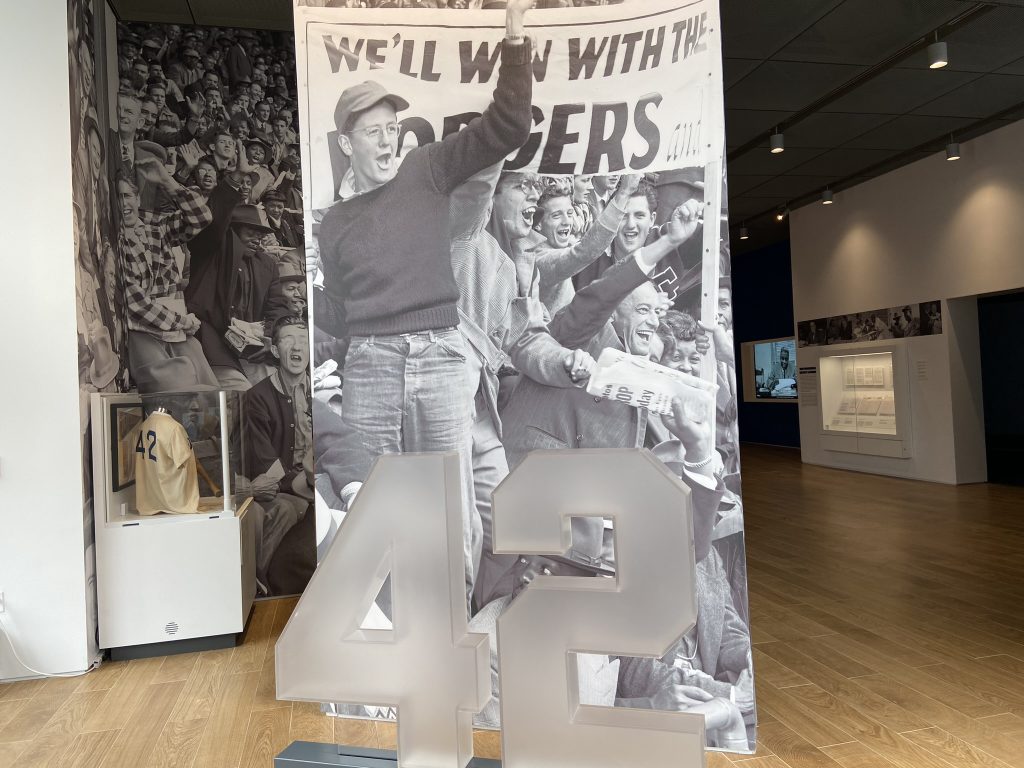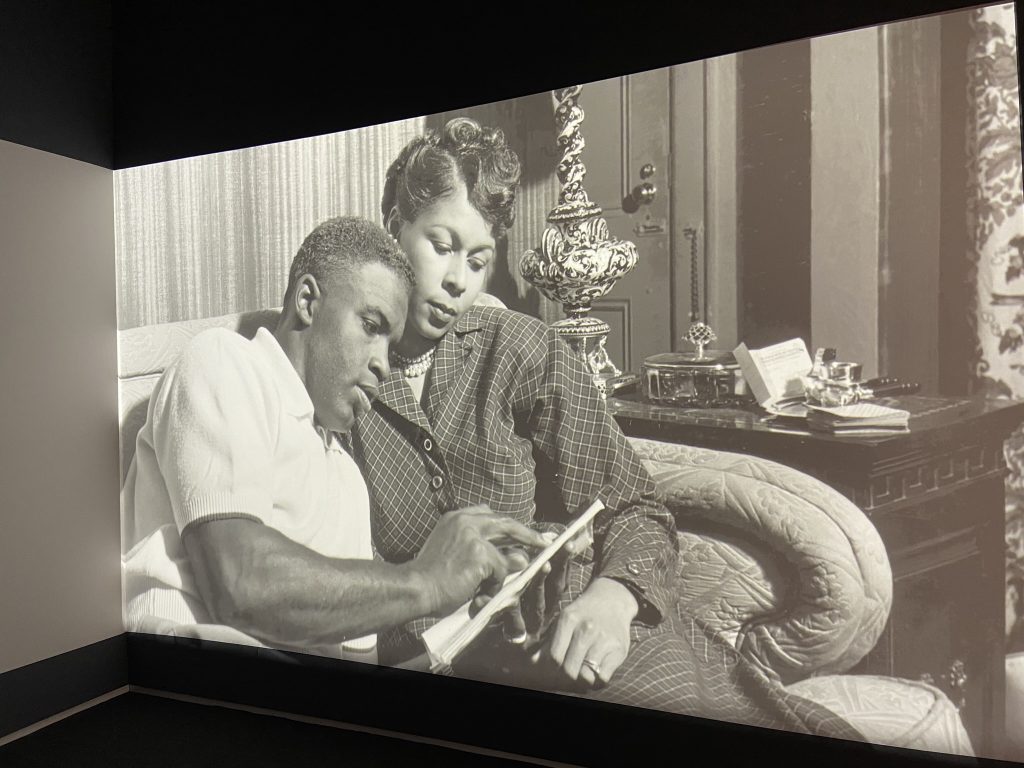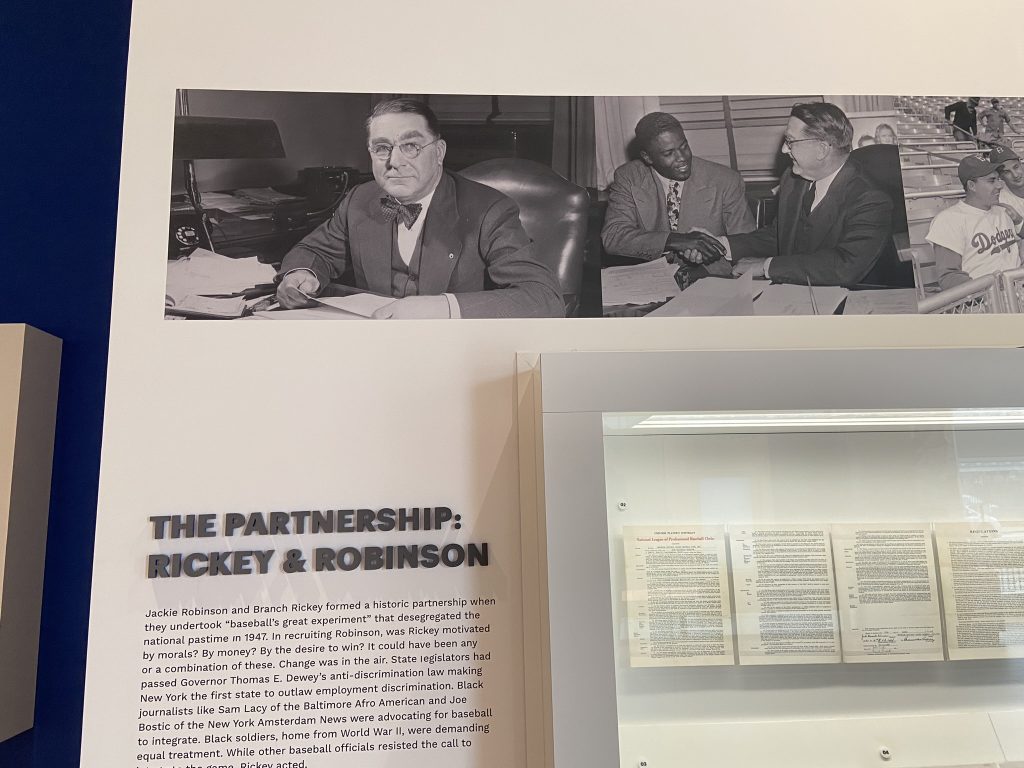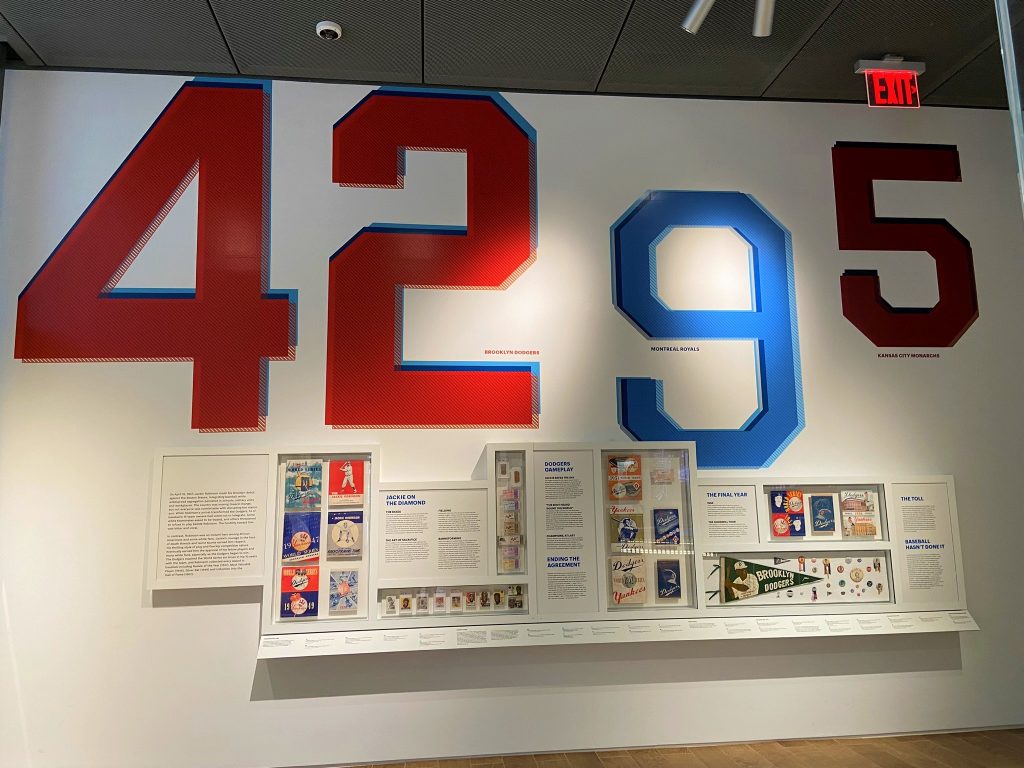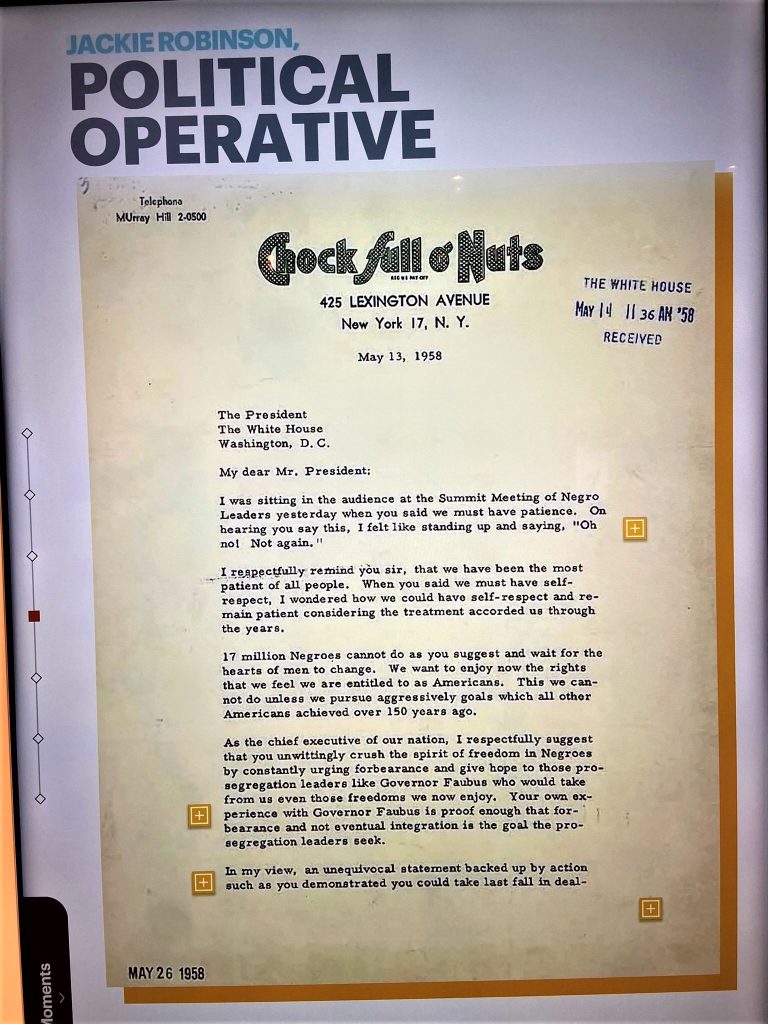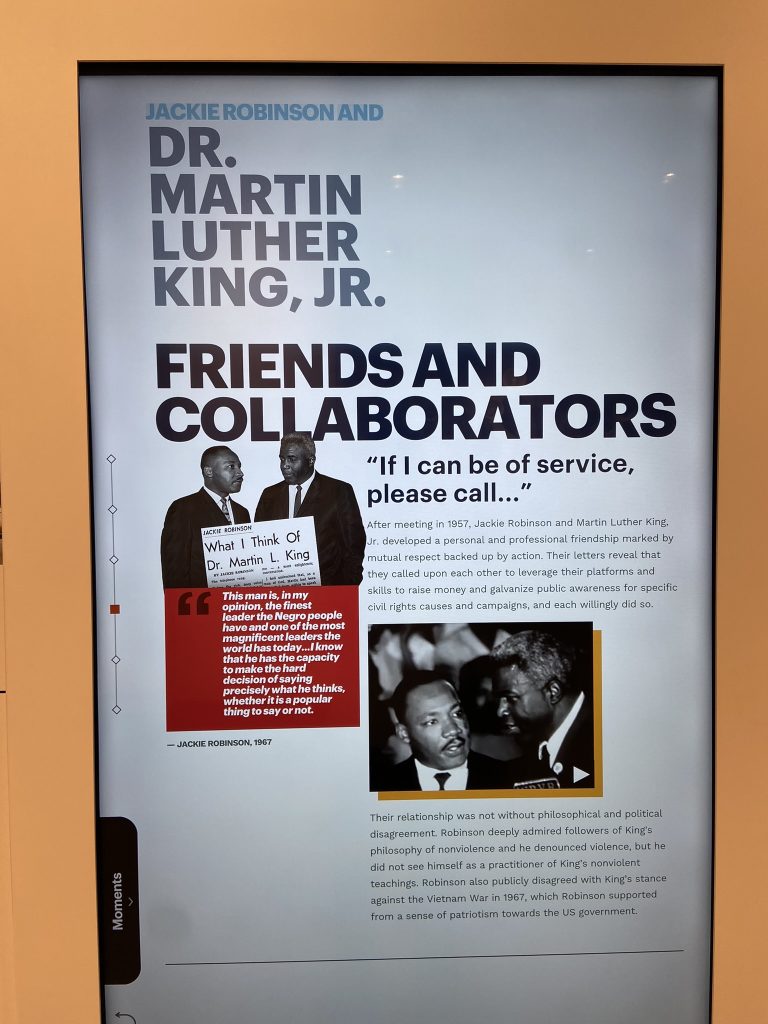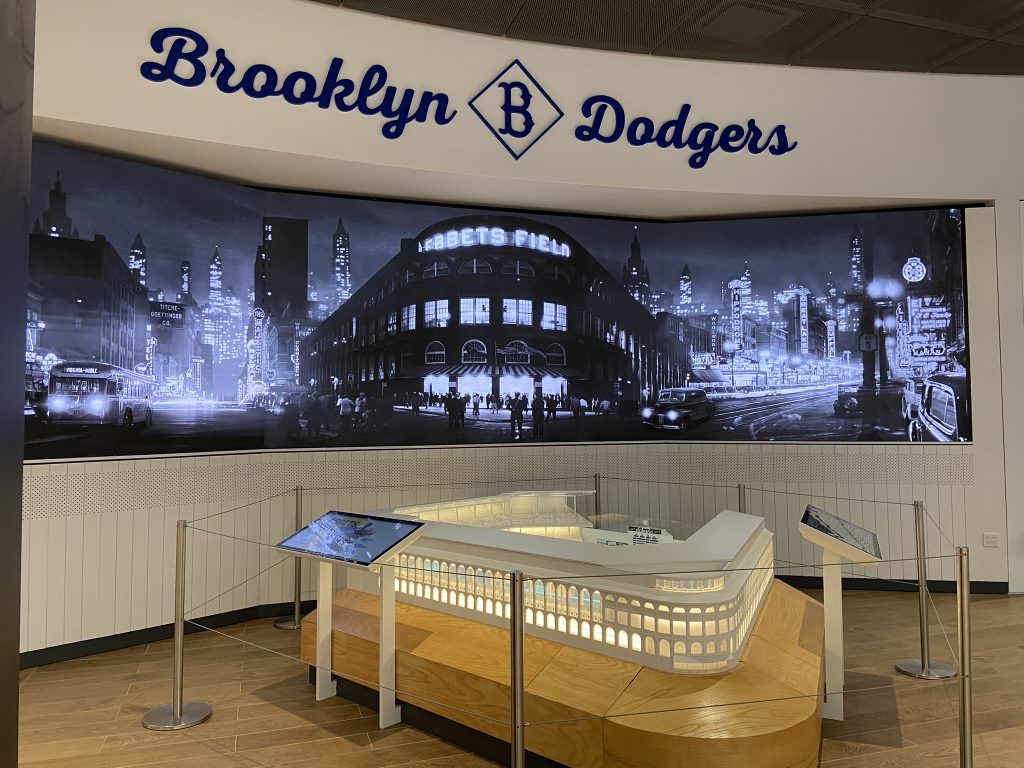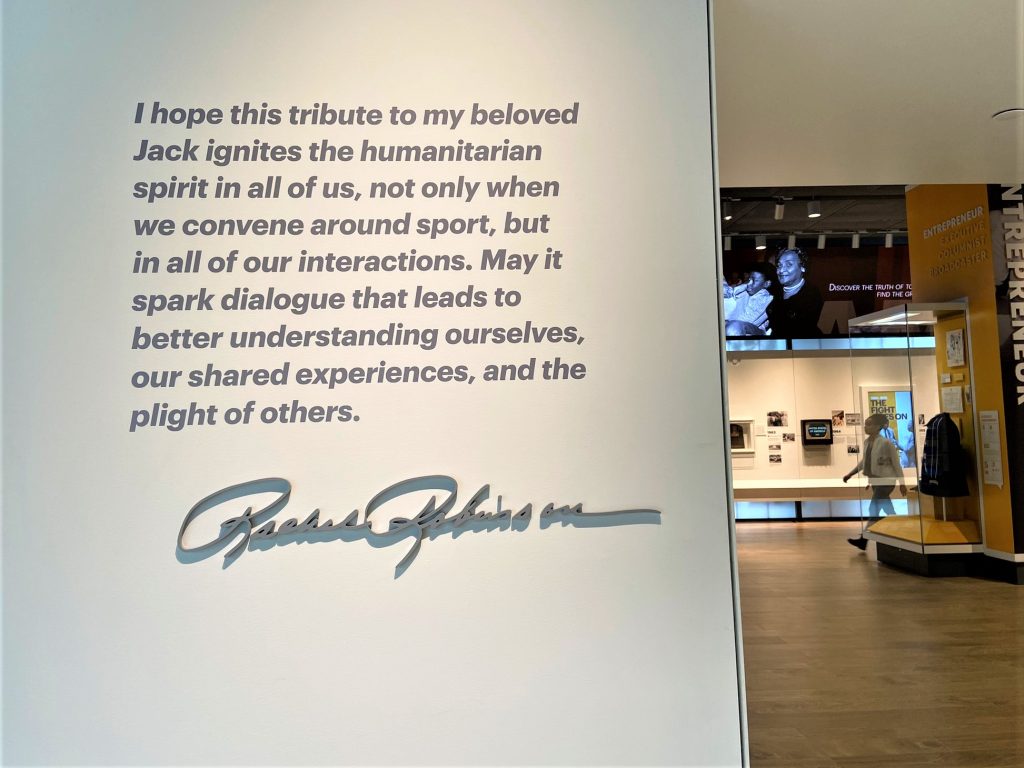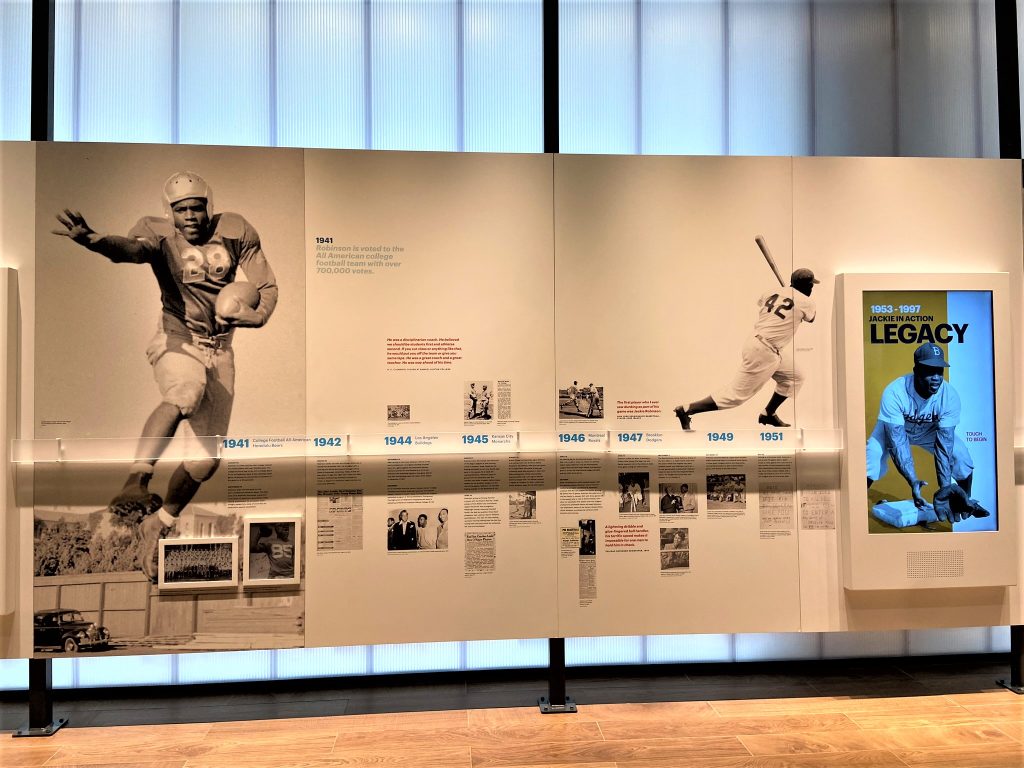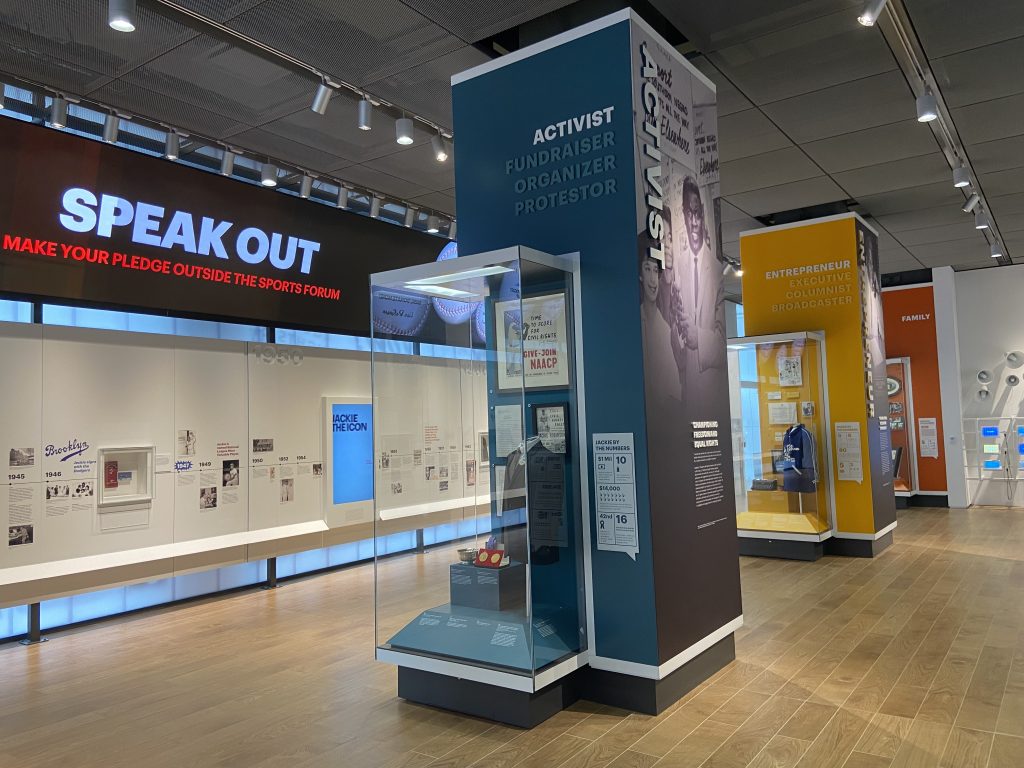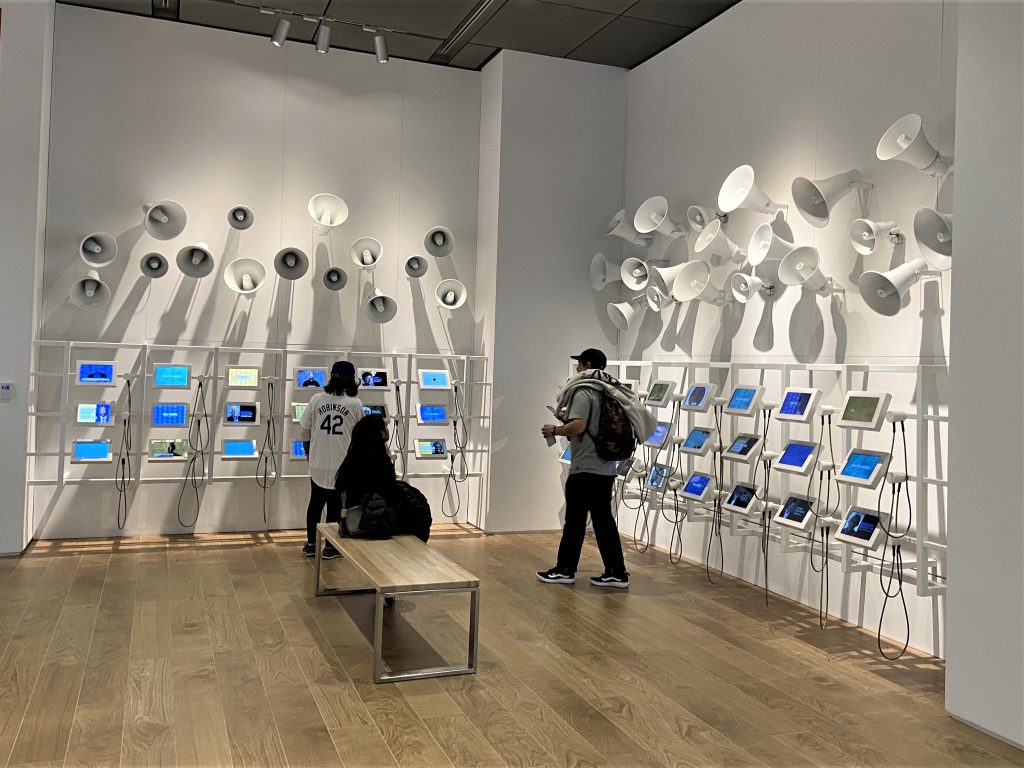Social activist, entrepreneur, soldier, and, of course, iconic athlete: Jackie Robinson was all these things during a life that broke barriers and opened opportunities for others in sports, business, and other areas. Opened in Lower Manhattan in September 2022, the Jackie Robinson Museum (JRM) examines Robinson’s legacy in baseball and beyond. Its immersive high-tech exhibits and displays of original documents, memorabilia, and historical images help visitors dive into topics from Brooklyn Dodgers baseball lore to the Civil Rights Movement. Whether they know only that in 1947 Robinson became the first African American to play in Major League Baseball in the 20th century or are aware of his dedication to equality for all Americans, the JRM is a lively, engaging experience that also encourages people to act on the social issues that matter to them.
The new museum is a project of the Jackie Robinson Foundation (JRF), established in 1973 by Rachel Robinson, Robinson’s widow, to preserve Robinson’s legacy and provide scholarships for minority youths graduating high school. Beyond financial aid, the four-year scholarship program provides webinars and on-site workshops, including ones on leadership development, to support students’ success in college and beyond. The more than 1,800 recipients since the program started have a remarkable 98 percent graduation rate. By opening the JRM, the foundation (which is based in the same building) aims to further its mission, educating people of all ages about the ideals embodied in Robinson’s life and providing a forum for discussion of today’s critical issues. Although the JRM was launched in 2008, it took 14 years to fulfill this vision, in part because of a global recession and the Covid-19 pandemic. Rachel Robinson, 100 years old, attended an opening ceremony, along with Jackie and Rachel Robinson’s surviving children, Sharon Robinson and David Robinson.
Exploring the Museum
Traditional displays and modern technology merge successfully in exhibits that pull from a collection of 4,500 classic baseball artifacts, rare personal items, and 40,000 historical images but also incorporate touchscreens and media kiosks. Designed by the innovative design and architecture firm Gensler, the almost 20,000-square-foot JRM—including a second-floor area used as an education center for groups—consists of two public galleries: a Main Gallery dedicated to Robinson’s life and legacy and a smaller Sports Gallery focused on his athletic achievements.
Two short films provide a great introduction: one looks at Jackie Robinson’s early family life and the values instilled in him. The other, a media installation called Crossing the Color Line, uses the accounts of Rachel Robinson and journalist Wendell Smith and historical images to re-create the challenges of the Robinsons’ 1946 cross-country trip from California through the deeply segregated South for spring training with the Montreal Royals, the Dodgers’ top farm club. After watching these presentations, visitors can explore thematic areas or follow the Timeline from the birth of Jack Roosevelt Robinson in Georgia in 1919 to his death in 1972. Stretching along a wall of the gallery, the Timeline has details of Robinson’s life, events in national history, artifacts such as original letters, and media kiosks where visitors can further investigate an object or topic.
Four floor-to-ceiling Story Towers in the Main Gallery are devoted to Robinson as Soldier, Entrepreneur, Activist, and Family Man, aspects of his life that may be less familiar. The Soldier tower explores Robinson’s World War II service. In 1944, while a second lieutenant in Texas, Robinson was court-martialed after refusing to move to the back of an Army bus that was unsegregated. After various bogus charges were dismissed, Robinson was acquitted by a panel of white officers. The Activist tower looks at his friendship and support of Dr. Martin Luther King Jr.; the columns and letters Robinson wrote (including a number to U.S. presidents) in support of civil rights; and the protests he attended, using his fame to encourage others to work for justice. Robinson’s later roles, when he worked as the first African American vice president of a major company (Chock Full o’Nuts), co-founded a bank in Harlem, and created a housing development company, get attention in the Entrepreneur tower.
Sections such as Robinson & Rickey and Supports & Challenges present concise, vivid portraits of the issues and people that 28-year-old Jackie Robinson encountered when he joined the Brooklyn Dodgers in 1947 as the century’s first African American player in Major League Baseball. Branch Rickey, the Dodgers’ general manager, told Robinson he was “looking for a ballplayer with guts enough not to fight back”—at least for the first few years. The contract they signed—for $5,000—is on display. Despite distracting insults and threats (Robinson wore a metal-lined cap when he played for protection from objects people might throw at him), he was named the first national Rookie of the Year in 1947 and was voted the National League’s Most Valuable Player in 1949. Robinson played with the Dodgers for 10 remarkable years, and in 1962 he became the first African American inducted into the Baseball Hall of Fame.
The Sports Gallery drills further into Robinson’s athletic career, from his time as a remarkable four-sport letter winner at UCLA to his Dodger glory years wearing number 42. There’s a story tower about Robinson’s time in the Negro Leagues and the Minor League, and wonderful memorabilia such as World Series programs. Another highlight, called Game Day, features a detailed, illuminated scale model of the Dodgers’ Ebbets Field stadium in Brooklyn created by 3D printing technology. Screens present the sights and sounds of Brooklyn baseball in the era when Robinson helped propel the Dodgers to six National League pennants and a World Series win in 1955 against the Yankees. On the other side of the Sports Gallery, a fun, image-packed display called Pop Culture Icon shows Robinson’s image on magazines, movie posters (he starred as himself in The Jackie Robinson Story in 1950), and advertisements.
With its winning combination of compelling memorabilia and multilayered storytelling about Robinson’s inspiring life and legacy, the Jackie Robinson Museum hits a home run.
Side Dish
The Mill, a casual sandwich shop and market in the same building as the JRM, is a quick stop for coffee and baked goods, soups, salads, sandwiches (build your own), and smoothies. Half a mile northeast of the JRM, the SoHo branch of Jack’s Wife Freda, a buzzy, all-day café, presents creative takes on all-day breakfast favorites such as a green shakshuka; sandwiches like grilled eggplant on baguette with mozzarella and pesto; enticing “shares” including fried zucchini chips and a kofta kebab; and chicken schnitzel and Freda’s matzo ball soup.
Linda Cabasin is a travel editor and writer who covered the globe at Fodor’s before taking up the freelance life. She’s a contributing editor at Fathom. Follow her on Instagram and Twitter at @lcabasin.
Cover Photo: The Sports Gallery focuses on Jackie Robinson’s career in sports, including the decade he spent wearing number 42 for the Brooklyn Dodgers.

